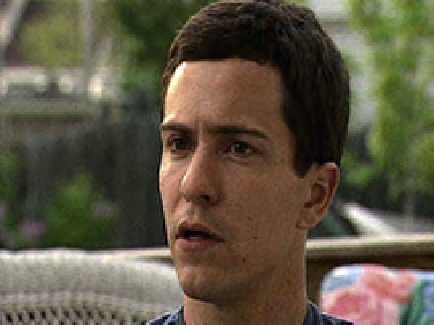Graphics Reference
In-Depth Information
Fig. 9.46
Later interview footage with primary correction.
Fig. 9.47
Data from Primary room.
color temperature didn't actually change much, but the contrast as it got
closer to dusk definitely changed.
Nolo Digital's Mike Matusek starts by correcting the first shot from
the interview, and then he corrects the second shot to match the first.
“This would be a combination of midtones and blacks that I'd bring down.
Midtone may not have enough range,” he says as eyes go back and forth
between scopes and monitor as he adjusts.
I ask him what the challenge is in getting these shots to match.
“I think you said that the sun was out in this first image and then it
started to go down in this second image,” he replies. The first shot has
more contrast and the highlight of his right side is up, so I'll probably
put a window on the left side. Probably increase the contrast on [the
second shot] to try to get them closer, then just match the flesh tone”
(
Figures 9.44
-
9.47
).
Matusek puts a window on the left side and lowers the brightness of
the background and the face highlight. “See? That's all it really needed”
(
Figures 9.48
and
9.49
)
.


Search WWH ::

Custom Search